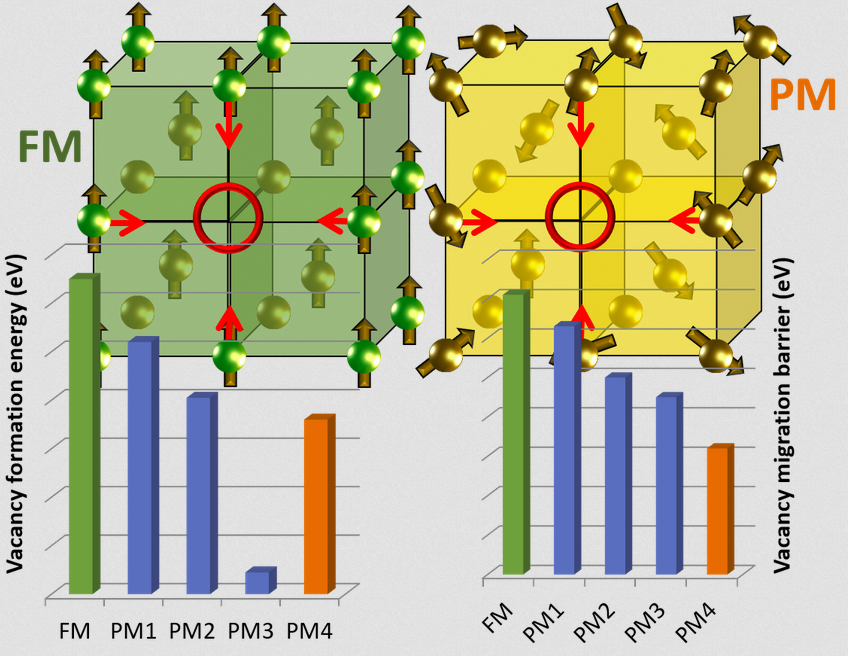Impact of Magnetism and Chemistry on Structural Defects
We first highlight the fact that the impact of paramagnetism on defects and kinetics is, though conceptually and computationally challenging, important for designing Fe-based alloys. Since magnetic degrees of freedom typically fluctuate faster than atomic degrees of freedom in the paramagnetic state, the atoms effectively experience averaged forces instead of instantaneous forces attained from each spin configuration. To account for this, a new computationally efficient method based on spin-space averaging [1] (SSA) has been developed to handle magnetic disorder next to defects. The method uses the spin constraint tool developed and implemented in the DFT code S/PHI/nX [2]. Chemical disorder has been included using special quasirandom structures (SQSs). The combination of different codes and the implementation of the complex simulations protocol were substantially simplified by using pyiron, the novel integrated development environment of the CM department.

Vacancy formation (left) and migration (right) energies in the ferromagnetic (FM) and paramagnetic (PM) state. In the PM state no relaxation (PM1), a ferromagnetic relaxation (PM2), a relaxation of individual paramagnetic snapshots (PM3) and a relaxation according to averaged paramagnetic forces (PM4) are compared.
Beginning with pure Fe, the method has first been demonstrated used to study local atomic relaxations next to point defects. To capture the chemical complexity of FeMn alloys, defect properties such as vacancy formation energies, vacancy-solute binding energies and vacancy migration energies have later been determined as a function of Mn concentration in the first nearest-neighbor shell. Thereby, it has been demonstrated that paramagnetism significantly affects atomic relaxations as well as diffusion barriers and thereby explains why Mn diffusion shows a different temperature dependence than Fe-self diffusion in α-Fe.
In this project, we further plan to study the effects of magnetic disorder and chemical disorder next to extended defects such as grain-boundaries in FeMn alloy. We also intend to extend the methodology to model finite-temperature effects.
